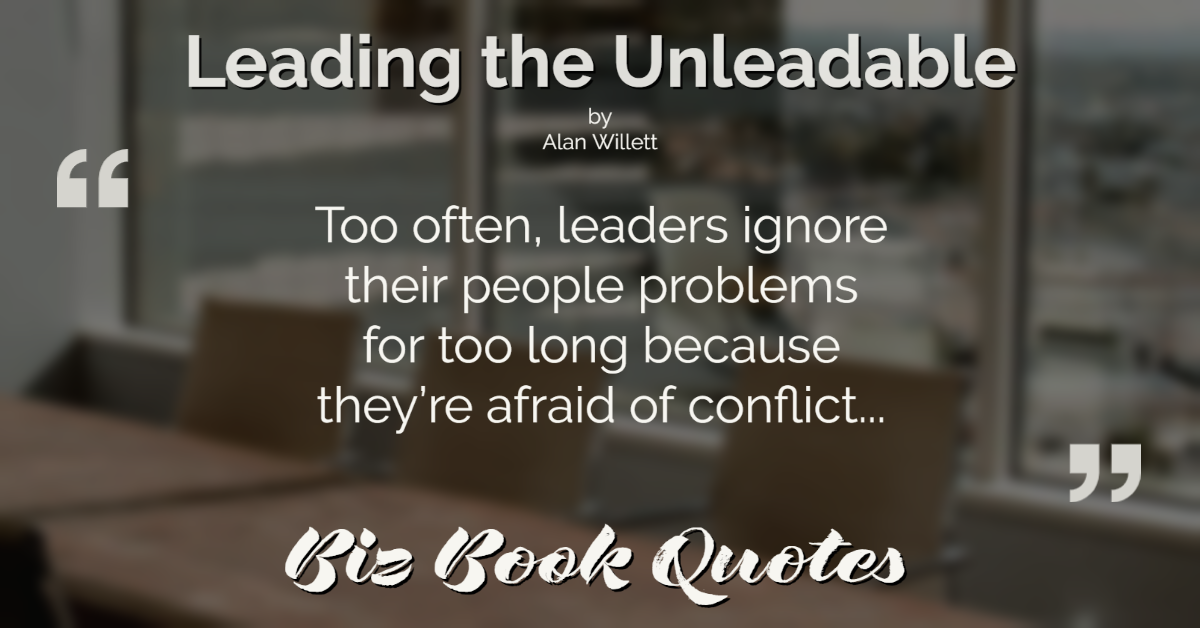 |
Too often, leaders ignore their people problems for too long because they’re afraid of conflict…
|
|
 |
There will be stress on any team striving for excellence, and that often leads to conflict. The key is that conflict must be constructive…
|
11 |
 |
People in leadership positions are generally very ambitious, which means there will be conflicts…
|
13 |
 |
Constructive conflict builds on ideas and will actually build more trust between people. Constructive conflict creates energy, passion, and greater belief in the team.
|
28 |
 |
Confronting people with performance issues is difficult. Talking to people about what they are doing wrong evokes the feeling of being in conflict. Leaders, too, are susceptible to the flight or fight syndrome.
|
72 |
 |
You should have healthy conflict and let the best solution come to light, even if it causes you some pain.
|
139 |
 |
When we are under stress or in conflict we lose skills we normally have, impact others in ways we don’t see, are at a loss for positive strategies. We need honest mirrors in these moments…
|
111 |
 |
We are less likely to make that leap from description to damnation if we see the conflict as a simple intersection, perhaps compounded by clashing roles, inside a larger system.
|
136 |
 |
…when teams engage in conflict over ideas in an atmosphere of mutual respect, they develop better ideas and perform better.
|
17 |
 |
…enforcing a no asshole rule doesn’t mean turning your organization into a paradise for conflict-averse wimps.
|
80 |